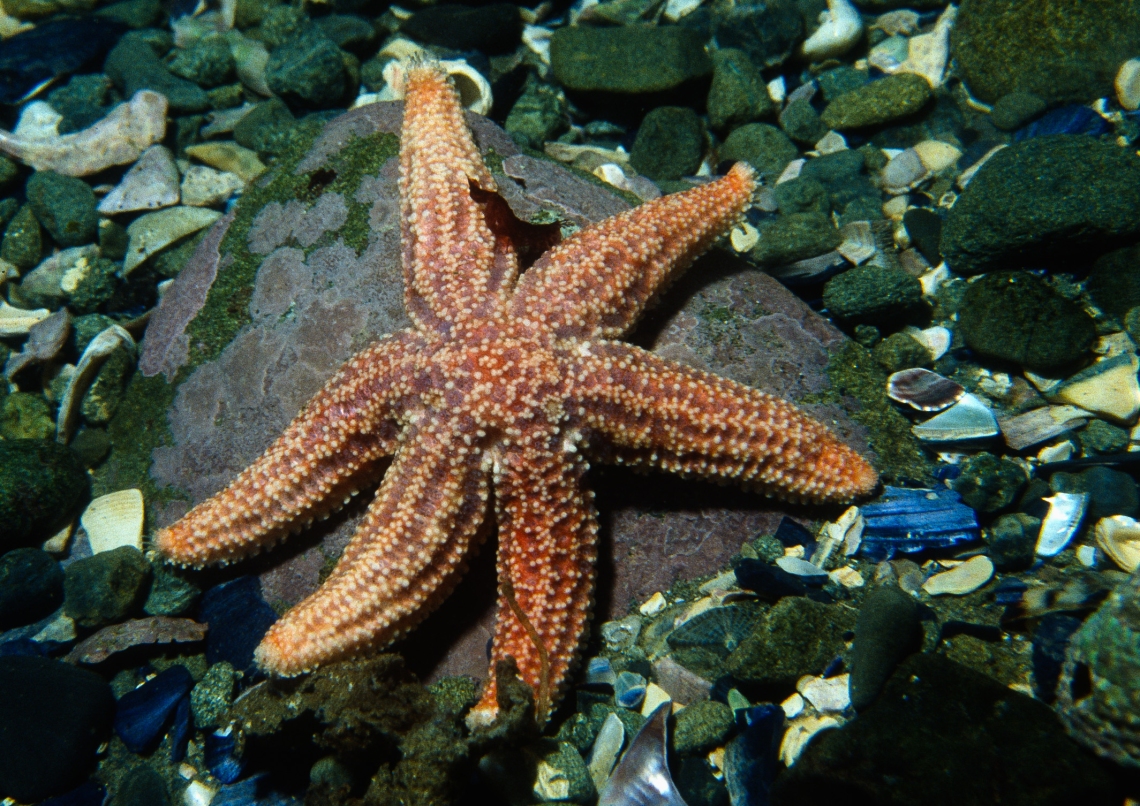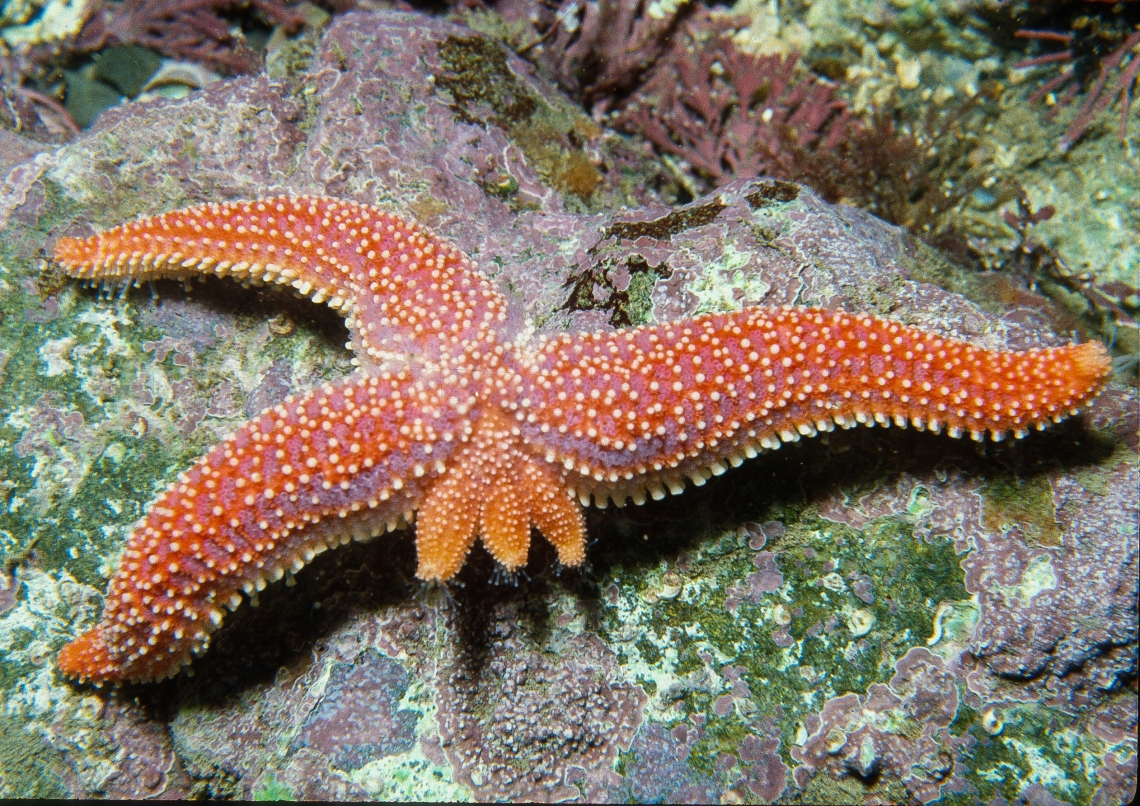The three and three star
Like other members of the family Asteriidae, Allostichaster is fissiparous. This is defined as the ability to reproduce asexually by fission, e.g. by splitting in half. This often results in two new specimens of Allostichaster each with three large arms and three small arms – hence the common name of 'three and three' star! The three small arms will eventually catch up and become the same size as the other three arms - and then the process might start all over again!
Where are they?
Allostichaster insignis occurs around New Zealand, but is more common from Cook Strait southwards. It can be found intertidally and subtidally, so could be seen on a shore near you (if you live in New Zealand!).
Fascinating research findings
Our friendly starfish expert at the Smithsonian, Chris Mah, has done a write up on research into fissiparity in a closely related genus, Coscinasterias. In this write up you can see pictures of three individuals that the research followed – within 19 months three individuals had become 12 individuals! Other species of Allostichaster are also fissiparous.
Further reading:
Overdyk LM, Scheibling RE, Barker MF 2016. Asexual reproduction and somatic growth of the fissiparous sea star Allostichaster polyplax in New Zealand. Marine Biology Research 12(1): 85-95.
Rubilar T, Pastor C, Díaz de Vivar E 2005. Timing of fission in the starfish Allostichaster capensis (Echinodermata: Asteroidea) in laboratory. Rev Biol Trop. 2005 Dec; 53 Suppl 3:299-303.


